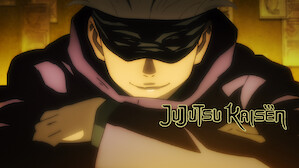
The Sons of Tegri are (like the Wu Leng) something of a national craft, this time for Mongolia – like many crafts/traditions, they have taken a beating but are still in the game. The Tai Hoi Li are a craft that exists entirely in certain difficult-to-access parts of the underground tunnel systems created during the Vietnam War. Cambodia get the Toc Faan, who are cannibals – there’s a twist there in that some quirk of their demonic pact makes them more moral the more they engage in cannibalism (except they can’t stop or they’ll be killed) … but still, the Storyteller is really going to have to work to get a good fit for that into a story. From Japan there are the Go Kamisori Gama, who draw on ninja mythology. Rather than attempting to be pan-national groups (as the Wu Leng mostly are for China), these crafts are narrower in scope (some of them very narrow).


Rather, this chapter mostly covers non-Chinese crafts. The ‘all the other mages’ chapter includes some very limited pages on non-Akashic Tradition mages appearing … but it’s mostly about how they don’t. Dragons of the East tries to put a little subtlety in there, but they’re pretty thoroughly unsuitable as PCs, and narrow even as NPCs. However, the Wu-Keng have strayed from this concept – having been pushed aside by the Wu Leng, the Wu-Keng have effectively been reduced to serving as concubine-slaves to demonic forces.

Their roots are older than the Wu Lung, going back to the religious practices that were more prominent in China prior to the warring states period (for example, the pyromantic ritual practice of oracle bones, which I believe gives us our earliest known information of any significance on Chinese history). The other craft, the Wu-Keng, are a much narrower concept. If player characters are running into Chinese mages from outside of the Traditions, they are very likely to be running into members of the Wu Lung – there are billions of people worth of cultural traditions to back up their paradigm. Their worldview includes the celestial bureaucracy, and their accomplishments included the ‘ascension’ of the man who would become the Emperor of the Yellow Springs (there are a lot of cross-references in Dragons of the East to other east Asia-focused titles, including Dark Kingdom of Jade). Most notably, this time period saw the development of a variety of philosophies that are still known today, including Confucianism, Taoism, and Legalism (much less broadly known outside of China today, but highly influential within China). Although it claims origins in the mythological Three Sovereigns and Five Emperors period, it has it’s ‘real’ beginnings in the warring states period (from around 475 BCE to 221 BCE). The Wu Lung is, generally speaking, the (Han) Chinese craft. The mystical history provides context for the interrelation between the Akashics (with a bit of information on five different sects), and two new crafts, the Wu Lung and the Wu-Keng. The remainder of then covers that mystical content – one chapter on mystical history, the Akashic Brotherhood, and Chinese mages one chapter on all of the other mages and one chapter on east Asia’s Technocracy and Technocracy analogues. However, they give a good summary for these purposes – it’s enough to let the reader place the mystical content within context (this becomes especially pertinent for the China material, since it’s represented by multiple mechanical ‘splats’ in the book, and some of those are tied to specific historical time periods and religious traditions). Both of these discussions are relatively shallow of necessity. That’s followed up by another 15 pages or so of real world discussion focused on the religious traditions of the area – Buddhism, Confucianism, Taoism, Shinto, and Hinduism. Note that, as Dragons of the East is now almost two decades old, the ‘modern days’ material is going to be a bit out of date. There’s about 15 pages of real world history of the above-listed countries, with China and Japan having the most prominence (India is also covered in this section and Hinduism is covered as well, but the new mystical material doesn’t really touch on India/Hinduism, since the existing Traditions already touch on that part of Asia). That’s not a drawback, it’s just the lens I examine the book through. Note that, as one might expect from a 14o-page supplement (aimed primarily at American and European audiences), Dragons of the East is probably best suited for having a group of more ‘traditional’ mages (or Technocrats) visiting the location – this sort of book just isn’t going to be able to cram a detailed understanding of mystical China, Japan, Korea, Thailand, Laos, Vietnam, and Cambodia.

Coming out in 2000, a couple of years after the Year of the Lotus, Mage: the Ascension finally formally expanded into eastern Asia with Dragons of the East.


 0 kommentar(er)
0 kommentar(er)
